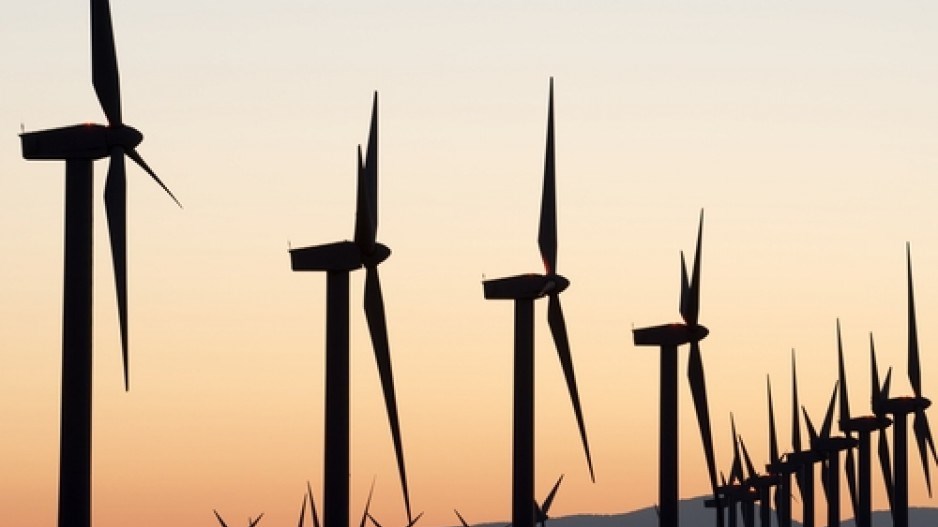Good for the Business Council of BC for sending Lower Mainland people to communities like Terrace, Kitimat, Prince George and Dawson Creek “to foster greater knowledge and awareness of the connection between the economic activities taking place in and around Dawson Creek [for the tour I joined], and the economic prosperity of communities across B.C., Canada and internationally.”
I seized the opportunity to be part of a whirlwind one-day October tour of a wind park, fracking sites, a natural gas processing site and a water recycling plant, with a lunchtime presentation on the Site C dam.
The energy and momentum of the natural gas industry in Dawson Creek is palpable everywhere. A new highway is under construction along what tour guide and former MLA Blair Lekstrom says is the busiest truck route in the province, where trucks carrying pipes, fuel, gravel and equipment were rumbling by in a constant stream. Population is growing at more than 5% a year; housing prices are leaping – up 22% since 2011; and regional unemployment in August was 3.9%, compared with the provincial average of 6.2%.
The biggest value of visiting sites is meeting the smart, determined and dedicated people who are making the most of what the B.C. government describes as “B.C.’s once-in-a-generation LNG opportunity, which has the potential to create 100,000 jobs and $1 trillion in economic activity.” Investors from all over the world are throwing hundreds of millions of dollars into these projects.
The spinoff impact of all their work – in Dawson Creek, across the many supply chains, right through to the Lower Mainland white-collar support services – is glaringly obvious, as is the attraction of all this to politicians desperate for new revenues.
But I was haunted through the whole trip by the disconnect between all this and what Christiana Figueres, head of the UN convention on climate change, calls “the biggest economic and technological transformation the world has ever seen.” The words “climate change” were never mentioned.
Of course, the world will depend on fossil fuels for decades yet, and of course it makes no sense to shut all this down while China keeps adding coal plants. But what is sorely missing is a recognition that betting everything on a fossil-fuelled future is an increasingly precarious game plan.
Fracking is fraught with risks that no one on our tour would acknowledge but that have led to its ban in numerous jurisdictions.
In September, 73 countries and 1,000 companies called for a price on carbon at a level that would undermine the finances of many of these projects. Public institution divestment of fossil fuel investments is just one sign of the growing public and business recognition that to keep the growth in planet temperatures to 2 C, 80% of known fossil fuel reserves have to stay in the ground.
Instead of pushing fossil fuel industries with a myopic 20th-century focus – including over $1 billion in tax credit breaks to fracking companies in the past two years, according to the B.C. auditor general – the B.C. government has to reposition fossil fuels as a shrinking way station en route to a growing renewable energy future.
We saw the possibilities in the spinning 82-metre blades of AltaGas Ltd.’s 102-megawatt wind farm (B.C.’s first, controlled out of Germany!) on a ridge overlooking Dawson Creek.
We’ve seen the 2012 GLOBE report that B.C.’s “clean economy” (clean energy supply and storage, clean transportation, green building and energy efficiency) was responsible for more than 123,000 jobs and $15 billion in GDP in 2011 – six times the number of B.C. jobs in oil, mining and gas. We heard how BC Hydro will meet 78% of projected power demands through conservation and efficiencies.
This, not fossil fuels, is the future that will deliver guaranteed sustained long-term financial benefits. •
Peter Ladner ([email protected]) is a co-founder of Business in Vancouver. He is a former Vancouver city councillor and former fellow at the SFU Centre for Dialogue. He is the author of The Urban Food Revolution.




